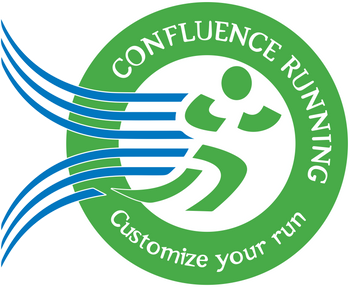Drills, Plyometrics, and Running Form
As most weathered athletes have heard, we do drills to increase our running economy, power production, and agility. Though many of us don’t understand WHY we do these drills. We go through the movements, have a picture in our mind, but can’t quite put two and two together of there specific purposes. With 16 weeks to go before the Binghamton Bridge Half Marathon, form training is essential. This article will attempt to put a clear understanding of the purpose of drills.
Running speed is a combination of (Stride Length) x (Stride Rate). The following drills allow for an athlete to develop different sections of his or her stride. While not all the drills directly relate to a particular variable (Length vs. Rate), many of the drills increase general running economy and allow for a passive movement to be graceful.
Passive Movements
"Increase Efficiency = Increase Stride Rate"
Unlike common perception, almost all movements of running should be passive, except for the push off phase. These first few drills allow the runner to learn these passive motions in an active way. The stride rate not only requires higher speed of passive movements, but the ability to “fire” and contract muscles quickly.
Drill Focus Purpose
|
Learn how to do High Knees |
This drill focuses on driving the knee forward |
Form Movement |
|
Learn how to do Butt Kicks |
Drive the heel of the foot toward your butt |
Form Movement |
|
Learn how to do Egg Shells |
Fire your legs up and down as quickly as possible |
Muscular Adaptation |
Bounding
"Increase Strength = Increase Stride Length"
(3 Variations)
Bounds
Learn how to Bound. This drill allows for an Athlete to develop a longer stride length. Without worrying about stride rate, the athlete can focus on taking the longest stride per step possible. This drill needs to be practiced properly as an athlete can develop an “overstride” which can lead to inefficiencies and injury.
High Skips
Learn how to High Skip. High Skips are a variation of the Bounding technique where an athlete develops the push off phase of running. The over exaggerated arm swing allows for a higher jump and therefore requires more strength on impact yet can develop a stronger push off phase.
Swims
This drill is a variation of Skips and is used by many jumpers. The only subtracted difference is there is no “skip” phase between push offs. This drills focuses on force production rather than stride length, or rate. This bounding drill requires and develops the most strength.
Active Movements
"Sustains Momentum = Increase Efficiency"
Straight Legged Bounding
Learn out to Straight-Leg Bound. While this drill does not focus on stride rate or length, High Kicks allow for an athlete to better understand how their foot should make contact with the ground. The foot should have a constant “pulling” motion rather than the usual “stop and go” impact that usually occurs with most runners.
Falls
Learn how to use the Falling Drill (“Segway” drill in Video). This drill teaches an athlete the proper lean for running which is usually a neglected part of running education. As described above, running is almost an entirely passive motion. The proper lean forward recruits and allows passive motions to take place more efficiently.
Tip: While on a treadmill, lean on the forward handle while running. This will allow you to practice the forward lean while running without feeling uncomfortable and unsafe.
Backwards Running
Learn how to use the Backwards Running drill. With this drill an athlete can more easily experience and recognize the “falling” motion that should be felt when running forwards. After the feeling is learned, the athlete can apply this experience of “falling” or consistent momentum when running regularly.
Conclusion
We may do drills regularly, and may even execute them properly, but we don’t always actively think of each drills purpose. We passively execute drill after drill without consciously thinking about what we are developing. The next time you do your drills, actively think about what you’re doing to properly execute and learn the required movements and adaptations. Tune in week to week for more information!


